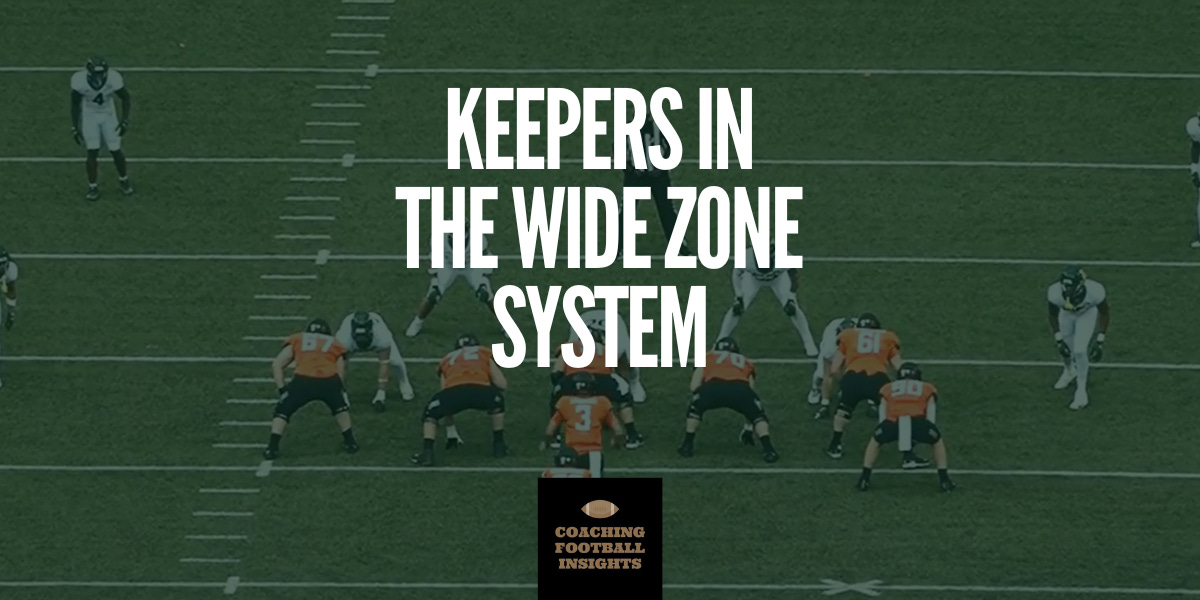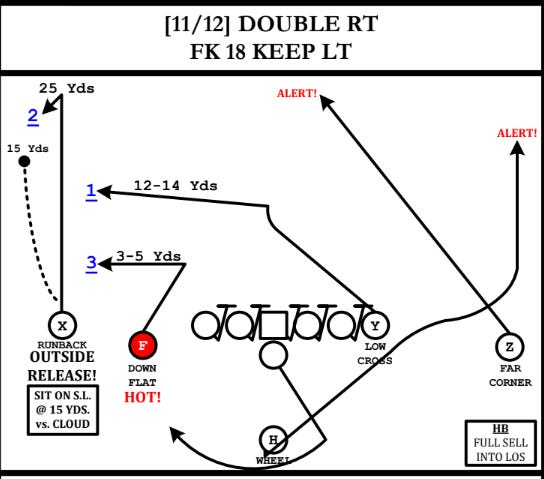Keepers in the Wide Zone System
How the bootleg marries perfectly with the Wide Zone.
Every system should have plays that complement each other. We’ve explored answers within the wide zone play, running strong and weak. Now, we add the next element.
Keepers, or in other systems, known as the bootleg pass. This is where you sell the Wide Zone, and the quarterback “keeps” the ball, getting depth and running opposite the offensive line. The quarterback should be faking keeps on every play.
The goal of the Keeper is to occupy backside pursuit. Typically, there is someone unblocked on the backside of the play. It could be a defensive end or an outside linebacker. If this player sells out to stop the Wide Zone it will cause issues.
The keeper gives the Wide Zone a triple option without the read. The defense must honor the threat of the quarterback pulling the ball, or leave themselves exposed to the backside. As a play caller in this system, it is imperative to call keepers often to keep the defense honest.
3 Level Floods
Most keeper routes are versions of 3-level floods. Because the quarterback is rolling out, the combinations are limited. You want routes that also break in the same direction the quarterback is running because often he is not going to be able to set his feet.
99% of route combinations have a drag some kind of flat route. The outside deep route is what teams will switch up to attack different looks.
Naked Keeper
Naked refers to leaving the backside edge unaccounted for. A true Naked keeper can be risky because the quarterback has his back turned initially to the unblocked defender. A playcaller only uses these when he is certain the C-gap defender is selling out to stop wide zone, if not, it could lead to a big loss.
18/19 Keep
18/19 Keep pairs with 18/19 Box.
The primary route is the low cross route by the backside receiver, in the example above it is the tight end (Y). This route takes advantage of safeties fitting the run fast, and the displacement that should take place from the linebackers getting downhill to stop the run.
The 2nd route in the progression is the deep comeback. This is always run by the outside receiver to the boot side. He will drive to 25 yards, and break outside looking to work back down his stem.
The slot or F in this example is the flat route. To time up with the wide zone fake he will attack inside for 3 to 5 yards before breaking back out. This is the hot or check down for the quarterback.
The Z receiver is left backside. He will angle deep, for the far corner pylon to the boot side. This isn’t in the normal progression, but if the safety is running hard with the low cross, this route can be a good option to alert the quarterback check.
Unless tagged differently, the running back will always wheel after the fake. This is another alert. If the play-caller sees no one is respecting him, they can tag H wheel to alert the quarterback to check the back first.
Falcons 18 Keep
Here the Falcons are using 18 Keep in the Super Bowl vs the Patriots. The safeties do a good job staying on the deep routes, but that leaves the comeback route 1 on 1.
Keep reading with a 7-day free trial
Subscribe to Coaching Football Insights to keep reading this post and get 7 days of free access to the full post archives.




